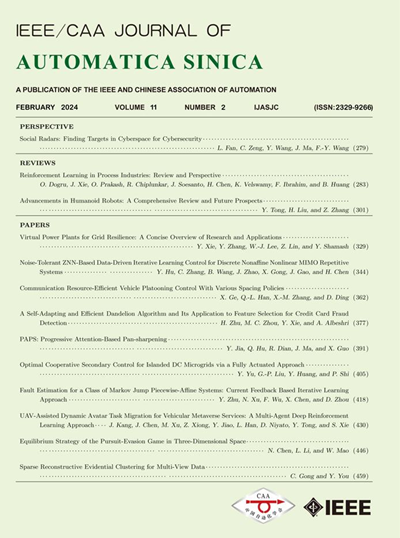自累积对比图聚类
IF 19.2
1区 计算机科学
Q1 AUTOMATION & CONTROL SYSTEMS
引用次数: 0
摘要
对比图聚类(CGC)是一种通过对比增广图数据对进行自监督表示学习的重要方法。然而,CGC方法的性能严重依赖于数据扩充的选择,这通常限制了网络泛化的能力。此外,现有的方法大多是基于节点本身对正样本和负样本进行表征,忽略了节点上不同跳数邻居的影响。本文设计了一种新的自累积对比图聚类方法(SC-CGC),该方法能够动态调整不同跳数邻居的影响。我们的直觉是,较好的邻居在其特征空间中更近,而较远的邻居在其特征空间中更远,因此我们可以在没有数据增强的情况下进行邻居对比。具体来说,SC-CGC依靠自编码器网络(AE)和图自编码器网络(GAE)两个神经网络分别对节点信息和图结构进行编码。为了使这两个网络相互作用和相互学习,设计了一种动态融合机制,将AE学习到的知识逐层传递到相应的GAE中。然后,通过动态累积不同跳数节点的影响,设计自累积对比损失函数来表征结构信息。最后,我们的方法以自监督的方式同时改进了表示学习和聚类分配。在8个真实数据集上的大量实验表明,SC-CGC始终优于SOTA技术。代码可在https://github.com/Xiaoqiang-Yan/JAS-SCCGC上获得。本文章由计算机程序翻译,如有差异,请以英文原文为准。
Self-Cumulative Contrastive Graph Clustering
Contrastive graph clustering (CGC) has become a prominent method for self-supervised representation learning by contrasting augmented graph data pairs. However, the performance of CGC methods critically depends on the choice of data augmentation, which usually limits the capacity of network generalization. Besides, most existing methods characterize positive and negative samples based on the nodes themselves, ignoring the influence of neighbors with different hop numbers on the node. In this study, a novel self-cumulative contrastive graph clustering (SC-CGC) method is devised, which is capable of dynamically adjusting the influence of neighbors with different hops. Our intuition is that better neighbors are closer and distant ones are further away in their feature space, thus we can perform neighbor contrasting without data augmentation. To be specific, SC-CGC relies on two neural networks, i.e., autoencoder network (AE) and graph autoencoder network (GAE), to encode the node information and graph structure, respectively. To make these two networks interact and learn from each other, a dynamic fusion mechanism is devised to transfer the knowledge learned by AE to the corresponding GAE layer by layer. Then, a self-cumulative contrastive loss function is designed to characterize the structural information by dynamically accumulating the influence of the nodes with different hops. Finally, our approach simultaneously refines the representation learning and clustering assignments in a self-supervised manner. Extensive experiments on 8 realistic datasets demonstrate that SC-CGC consistently performs better over SOTA techniques. The code is available at https://github.com/Xiaoqiang-Yan/JAS-SCCGC.
求助全文
通过发布文献求助,成功后即可免费获取论文全文。
去求助
来源期刊

Ieee-Caa Journal of Automatica Sinica
Engineering-Control and Systems Engineering
CiteScore
23.50
自引率
11.00%
发文量
880
期刊介绍:
The IEEE/CAA Journal of Automatica Sinica is a reputable journal that publishes high-quality papers in English on original theoretical/experimental research and development in the field of automation. The journal covers a wide range of topics including automatic control, artificial intelligence and intelligent control, systems theory and engineering, pattern recognition and intelligent systems, automation engineering and applications, information processing and information systems, network-based automation, robotics, sensing and measurement, and navigation, guidance, and control.
Additionally, the journal is abstracted/indexed in several prominent databases including SCIE (Science Citation Index Expanded), EI (Engineering Index), Inspec, Scopus, SCImago, DBLP, CNKI (China National Knowledge Infrastructure), CSCD (Chinese Science Citation Database), and IEEE Xplore.
 求助内容:
求助内容: 应助结果提醒方式:
应助结果提醒方式:


